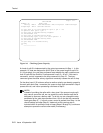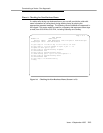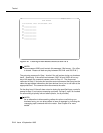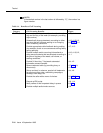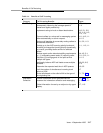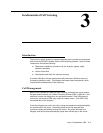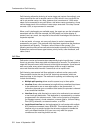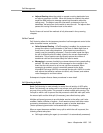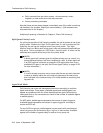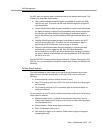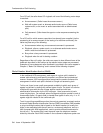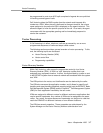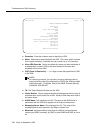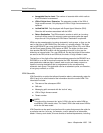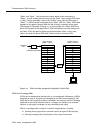
Call Management
Issue 4 September 1995
3-3
■ Adjunct Routing allows the switch to request a routing destination from
an adjunct processor via ASAI. When this feature is enabled, the switch
sends the ASAI adjunct a message containing information about the
calling party. The adjunct uses this information to determine, from its
databases, the best place for the switch to send the call. The adjunct then
passes this routing information back to the switch.
Each of these call control flow methods is fully discussed in the upcoming
chapters.
Caller Control
Call Vectoring allows for the temporary transfer of call management control to the
caller via several means, as follows:
■ Caller-Selected Routing. If Call Prompting is enabled, the customer can
prompt the caller to input information in the form of dialed digits from a
touch-tone or local rotary telephone. (A recorded announcement is
usually used for prompting purposes.) Once the caller inputs the digits,
the call is efficiently and accurately routed to the correct department or
destination. This procedure can significantly reduce the number of
transferred calls and thus better satisfy the caller’s needs.
■ Messaging is a means of satisfying customer demand during peak calling
periods. The caller can leave a voice message for the customer in the
event that the call cannot be or has not yet been answered. When
messaging is enabled, control is eventually passed to the Audio
Information Exchange (AUDIX) or message service split. AUDIX is a voice
mail adjunct that allows a customer to record, edit, forward, and retrieve
voice messages to and from callers.
Subsequent chapters discuss these procedures in more detail.
Call Queuing to Splits
Basic Call Vectoring is used primarily to control the call activity of ACD splits.
Basic Call Vectoring can queue calls to up to three such splits simultaneously at
any one of four priority levels. This process is called
multiple split queuing
. The
first split to which a call is queued via this process is called the
main split
, while
the second split and the third split (if necessary) are called
backup splits
.
Multiple split queuing
serves to provide better service to the caller, and it also
enables a better utilization of agents. A call remains queued until either vector
processing terminates or the call reaches an agent or another destination.
(Vector processing termination is discussed later in this chapter.)
When an agent becomes available in any split to which the call is queued, the
following events take place:
■ Call begins alerting the agent (or connects if it is automatically answered).



